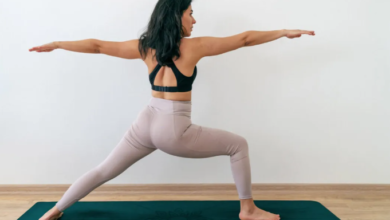Exercises for Alleviating, Stretching, and Strengthening to Address Back Pain

Dealing with back pain can be a real challenge, affecting your daily life and overall well-being. But fear not! There are simple and effective exercises that can help relieve, stretch, and strengthen your back, providing much-needed relief. In this guide, we’ll explore gentle exercises suitable for various fitness levels, aimed at promoting flexibility, reducing tension, and building a stronger back.
Engaging in targeted exercises can be instrumental in alleviating back pain, promoting flexibility, and strengthening key muscle groups. Incorporating a combination of stretching and strengthening exercises into your routine can contribute to improved spine health. Begin with gentle stretches that focus on the back and surrounding muscles, such as cat-cow stretches, which involve arching and rounding your back on hands and knees.
To strengthen the core muscles that support the spine, exercises like pelvic tilts and bridges can be beneficial. These movements target the abdominal and lower back muscles, fostering stability and reducing the risk of future discomfort. Additionally, incorporating yoga poses, such as child’s pose and cobra, can enhance flexibility and provide relief.
Understanding Back Pain

Before we dive into exercises, it’s essential to understand that back pain can have various causes, from muscle strain to poor posture. If you have severe or persistent pain, it’s wise to consult a healthcare professional for personalized advice. These exercises are designed for general relief and may not be suitable for everyone.
1. Cat-Cow Stretch

How to do it:
Start on your hands and knees, with your wrists directly under your shoulders and your knees under your hips.
Exhale while you arch your back, bringing your head and tailbone up toward the ceiling while lowering your abdomen to the ground (the cow posture).
Benefits:
Stretches and mobilizes the spine.
Engages core muscles.
2. Child’s Pose
How to do it:
Kneel on the mat with your big toes touching and knees spread apart.
Sit back on your heels, reaching your arms forward on the mat.
Rest your forehead on the mat and relax in this stretch.
Benefits:
Stretches the lower back and hips.
Relieves tension in the spine.
3. Pelvic Tilts
How to do it:
Recline on your back with your knees flexed and feet resting flat on the ground.
Tighten your abdominal muscles and push your lower back into the mat.
Hold for a few seconds, then release.
Benefits:
Strengthens abdominal muscles.
Improves pelvic stability.
In the realm of fitness, the emphasis on upper body aesthetics often overshadows the significance of leg workouts. While sculpted arms and a well-defined chest may be eye-catching, neglecting your lower body can have far-reaching consequences. In this comprehensive guide, we will explore in detail why skipping leg day is a mistake and why a holistic approach to strength training is crucial for overall health and fitness.
4. Knee-to-Chest Stretch
How to do it:
Lying on your back, place your feet flat on the floor and bend your knees. Secure one leg with both hands as you gently pull it towards your chest.
Benefits:
Relieves pressure on the spine.
5. Seated Forward Bend
How to do it:
Keep your legs straight on the floor while sitting.
Hinge at your hips and reach towards your toes.
Hold for 20-30 seconds.
Benefits:
Stretches the lower back, hamstrings, and calves.
Promotes flexibility in the spine.
6. Bridge Exercise
How to do it:
Recline on your back with your knees bent and feet positioned at hip-width apart.
Lift your hips towards the ceiling, creating a straight line from your shoulders to your knees.
Release the pressure after a brief period of time of holding.
Benefits:
Strengthens the lower back, glutes, and hamstrings.
Improves spine mobility.
7. Trunk Rotation Stretch
How to do it:
After maintaining for a short while, release the pressure.
Lower both knees to one side while ensuring your shoulders remain on the mat.
Benefits:
Stretches the muscles along the spine.
Improves spinal flexibility.
8. Wall Angels
How to do it:
Lying on your stomach, extend your arms in front of you.
Raise your left leg and right arm off the ground at the same time.
Turn around and raise your right leg and left arm
Benefits:
Strengthens the muscles between the shoulder blades.
Improves posture.
9. Pelvic Clock Exercise
How to do it:
Recline on your back with knees bent and feet flat on the floor. Envision your pelvis as the central point of a clock.
Tilt your pelvis in different directions, moving through each “hour” on the clock.
Benefits:
Enhances awareness of pelvic movement.
Promotes core stability.
10. Swimming Exercise
How to do it:
Stretch your arms out in front of you while lying on your stomach.
Raise your left leg and right arm off the ground at the same time.
Turn around and raise your right leg and left arm.
Benefits:
Strengthens the muscles along the spine.
Improves back extensor muscles.
11. Hip Flexor Stretch
How to do it:
Place your right knee on the ground while positioning your left foot forward, forming a 90-degree angle.
Shift your weight forward, feeling a stretch in the front of your right hip.
Hold for 15-30 seconds, then switch sides.
Benefits:
Alleviates tension in the hip flexors.
Supports lower back health.
Tips for a Healthy Back.
Maintain an Active Lifestyle.
Consistent engagement in physical activities helps keep your back muscles robust and flexible. Maintain Good Posture: Whether sitting or standing, practice proper posture to reduce strain on your back.
Lift Safely: Bend your knees and keep your back straight when lifting heavy objects.
Stay Hydrated: Proper hydration is essential for spinal discs.
Incorporate Core Exercises: A strong core provides support for your back.
Conclusion
Incorporating these back pain exercises into your routine can contribute to relief, improved flexibility, and a stronger back. However, it’s crucial to approach these exercises with mindfulness and consult a healthcare professional if you have underlying health conditions. Consistency is key, so make these exercises a regular part of your routine, and gradually, you may find relief and enhanced back health. Remember, always listen to your body and make modifications as needed to ensure a safe and effective workout. Your journey to a healthier, pain-free back begins with these simple yet impactful exercises.





